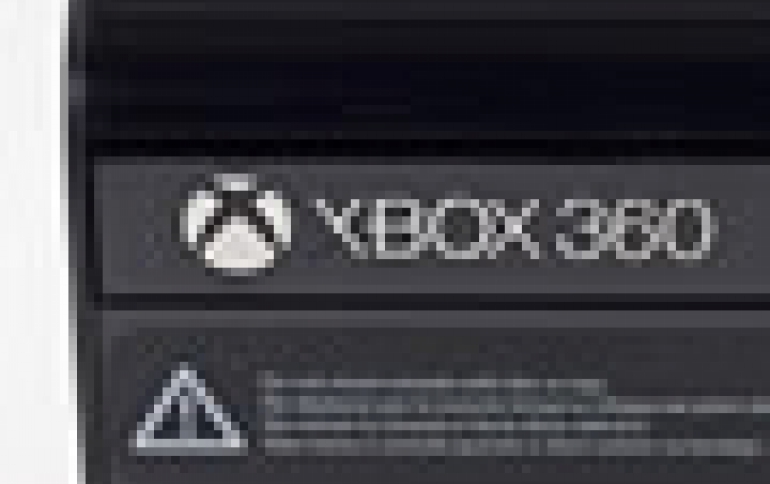
Xbox 360 E Teardown Has No Surprises
At the E3 2013 Xbox Media Briefing, Microsoft announced a redesigned version of the Xbox 360 styled after the much anticipated Xbox One. Besides the new look, let's see how the Xbox 360 E differs from the currently available Xbox 360 S, in terms of internal components.
The Xbox 360 E's tech specs are nearly identical to those of the Xbox 360 S. The latest Xbox 360 has a 4 or 250 GB hard drive along with internal Wi-Fi capability.
The backside of the Xbox 360 E, lacks the the old A/V and S/PDIF ports in favor of a single composite out jack. In addition, having five USB ports was excessive, so now you only get four. The E has two ports in the front, dropping one of the rear USB ports found in the S.
 With the help of iFixit.com, we are ready to navigate across the internal parts of the Xbox 360 E. Starting with the storage, it's a 5400 RPM Seagate 250 GB hard drive placed into a hard drive case. Unfortunately, you cannot change this one as any attempt to "disassemble, decompile, create derivative works of, reverse engineer, or modify" hardware is a violation of the Xbox Live Terms of Use and may result in enforcement action.
With the help of iFixit.com, we are ready to navigate across the internal parts of the Xbox 360 E. Starting with the storage, it's a 5400 RPM Seagate 250 GB hard drive placed into a hard drive case. Unfortunately, you cannot change this one as any attempt to "disassemble, decompile, create derivative works of, reverse engineer, or modify" hardware is a violation of the Xbox Live Terms of Use and may result in enforcement action.
New to the 360 E, the front buttons (power button, disc tray eject button and connect button) are housed on their own separate board within the front panel, rather than residing on the RF module.
The Wi-Fi board is tucked away in the backside of the console. It includes a
Marvell 88W8786U integrated MAC/baseband/RF SoC, a Skyworks 2597L 2.4 GHz power amplifier with power detector and a California Eastern Laboratories µPG2179TB SPDT switch.
The design of the optical drive remains unchanged - the Lite-On DG-16D5.
Microsoft claims that the Xbox 360 E is "quieter than ever." However, it seeems that the fan inside is identical to the fan found in the Xbox 360 S.
Moving on, Microsoft is continuing to use the same cooling system it used for the 360 S in the new model.
And finally the processor. The ICs found on the frontside of the motherboard include:
- The GlobalFoundries XCGPU SoC - a combination of the Xenon CPU and the Xenos X818337 GPU onto the same die, with eDRAM in the same package.
- Microsoft X850744-004 south bridge
- Hynix HY27US08281A 128 Mb NAND flash
- Samsung K4J10324KG-HC14 1 Gb GDDR3 SDRAM
The backside of the Xbox 360 E, lacks the the old A/V and S/PDIF ports in favor of a single composite out jack. In addition, having five USB ports was excessive, so now you only get four. The E has two ports in the front, dropping one of the rear USB ports found in the S.
 With the help of iFixit.com, we are ready to navigate across the internal parts of the Xbox 360 E. Starting with the storage, it's a 5400 RPM Seagate 250 GB hard drive placed into a hard drive case. Unfortunately, you cannot change this one as any attempt to "disassemble, decompile, create derivative works of, reverse engineer, or modify" hardware is a violation of the Xbox Live Terms of Use and may result in enforcement action.
With the help of iFixit.com, we are ready to navigate across the internal parts of the Xbox 360 E. Starting with the storage, it's a 5400 RPM Seagate 250 GB hard drive placed into a hard drive case. Unfortunately, you cannot change this one as any attempt to "disassemble, decompile, create derivative works of, reverse engineer, or modify" hardware is a violation of the Xbox Live Terms of Use and may result in enforcement action.New to the 360 E, the front buttons (power button, disc tray eject button and connect button) are housed on their own separate board within the front panel, rather than residing on the RF module.
The Wi-Fi board is tucked away in the backside of the console. It includes a
Marvell 88W8786U integrated MAC/baseband/RF SoC, a Skyworks 2597L 2.4 GHz power amplifier with power detector and a California Eastern Laboratories µPG2179TB SPDT switch.
The design of the optical drive remains unchanged - the Lite-On DG-16D5.
Microsoft claims that the Xbox 360 E is "quieter than ever." However, it seeems that the fan inside is identical to the fan found in the Xbox 360 S.
Moving on, Microsoft is continuing to use the same cooling system it used for the 360 S in the new model.
And finally the processor. The ICs found on the frontside of the motherboard include:
- The GlobalFoundries XCGPU SoC - a combination of the Xenon CPU and the Xenos X818337 GPU onto the same die, with eDRAM in the same package.
- Microsoft X850744-004 south bridge
- Hynix HY27US08281A 128 Mb NAND flash
- Samsung K4J10324KG-HC14 1 Gb GDDR3 SDRAM













